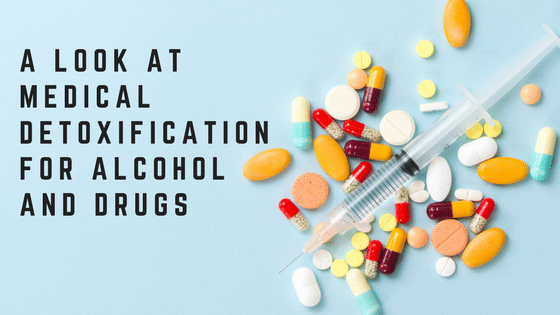Find accessible affordable alcohol detox services that ensure a safe detox process.
Find accessible affordable alcohol detox services that ensure a safe detox process.
Blog Article
The Function of Alcohol Detoxification in Taking Care Of Withdrawal Signs Efficiently
Navigating the tumultuous journey to sobriety can be difficult, with alcohol withdrawal signs posturing a substantial challenge. The role of alcohol detoxification in this procedure is essential, providing a clinically supervised setting for safe alcohol elimination and sign management.
Comprehending Alcohol Withdrawal: Signs and Duration
What happens when a persistent enthusiast all of a sudden stops consuming alcohol? The body, lengthy accustomed to the downer results of alcohol, experiences a rebound result referred to as withdrawal. Symptoms can vary from light to severe, generally appearing within 8 hours of the last drink, peaking by 24 to 72 hours, and perhaps long lasting weeks.
Originally, individuals might struggle with stress and anxiety, restlessness, and sleep problems. Physical signs and symptoms such as sweating, fast heart rate, and hand tremors may also occur. As the withdrawal progresses, signs can rise to severe confusion, hallucinations, high temperature, and seizures, a problem known as delirium tremens.

The Principle of Alcohol Detox: A Short Introduction
The idea of alcohol detoxification is a crucial part of the healing trip for those having a hard time with alcohol dependency. The procedure, while complex, contributes in purging the body of alcohol and its poisonous impacts. As we continue, the importance of this detoxification process in connection with handling withdrawal symptoms will certainly be comprehensively reviewed.
While many regard alcohol detoxing as a simple process, it is really a complex physical operation that the body undergoes to rid itself of damaging alcohol-related toxic substances. Alcohol cleansing, therefore, becomes a critical action in the recuperation journey. It includes the mindful management of withdrawal symptoms that surface as the body adjusts to the lack of alcohol.
In the world of dependency recovery, the significance of the alcohol detoxification process typically remains underappreciated. It makes up the preliminary action in alcohol addiction treatment, focusing on removing the hazardous material from the body. When done correctly and under clinical supervision, it can alleviate the severity of withdrawal signs and symptoms, decreasing the risk of issues.
Exactly How Alcohol Detoxification Aids in Taking Care Of Withdrawal Signs And Symptoms
Alcohol detoxing plays a crucial role in handling withdrawal signs. It entails the secure removal of alcohol from the body, thereby lowering the physical and emotional influences of withdrawal. This process aids in creating a steady structure for succeeding healing initiatives.
Despite its prospective dangers, detoxification from alcohol can considerably aid handle and minimize withdrawal symptoms. The body, accustomed to the presence of alcohol, reacts detrimentally when it is unexpectedly robbed, leading to withdrawal signs. Alcohol detoxification aims to lessen these signs and symptoms and avoid prospective go problems.
While the process of cleansing can be challenging, it plays an essential duty in managing withdrawal signs and symptoms linked with alcohol cessation. The function of cleansing is to safely take care of withdrawal symptoms when someone quits drinking alcohol. This procedure can help to lessen the physical impacts of withdrawal, such as drinking, seizures, and hallucinations, by gradually minimizing alcohol consumption or using medicine to regulate symptoms.

The Structure of an Efficient Alcohol Detoxification Program
To make certain an effective recuperation, the framework of an effective alcohol detox program should be thoroughly developed and customized for every individual. This implies thinking about their alcohol consumption background, level of addiction, physical health and wellness, and mental state.
The procedure commonly begins with an extensive assessment to identify the seriousness of the dependency and any kind of possible co-occurring problems. This examination assists in establishing the most appropriate treatment strategy.
Following, a detoxification process is started which is meant to eliminate alcohol from the body. This phase can be testing because of withdrawal signs, but an efficient program provides required assistance to handle these signs and avoid relapse.

Finally, an effective alcohol detox program need to have a solid aftercare strategy, supplying continuous support to stop relapse and make sure long-lasting healing. This alternative strategy is critical in guaranteeing the success of the detoxification program.
The Function of Clinical Supervision in Alcohol Detox
Provided the prospective intensity of withdrawal signs, clinical guidance plays an important function in alcohol detox (Alcohol withdrawal treatment). This procedure often includes uncomfortable, and occasionally life-threatening, symptoms such as tremors, hallucinations, and seizures. Clinical workers are furnished to manage you could look here these signs and symptoms, making use of medicine to ease pain and tracking vital indicators to ensure safety and security
In enhancement to physical health, clinical supervision additionally offers psychological assistance. The process of detoxification can be emotionally draining, cultivating sensations of anxiety, stress and anxiety, and clinical depression. Educated experts can offer required psychological support, assisting people deal with these feelings properly.
Lastly, medical supervision assists to handle the threat of problems. Withdrawal can cause significant health difficulties, including dehydration and heart issues. Doctor can identify these dangers early, supplying punctual and proper intervention.
Verdict
To conclude, alcohol detoxification is an important preliminary action in handling withdrawal signs and guiding towards long-term sobriety. Via a structured detoxification program and medical guidance, the intensity of withdrawal symptoms can be considerably decreased, enhancing convenience and safety and security for the person. The best objective is to make sure a healthier, alcohol-free life, with ongoing support necessary to preserve sobriety and protect against regression.
Report this page